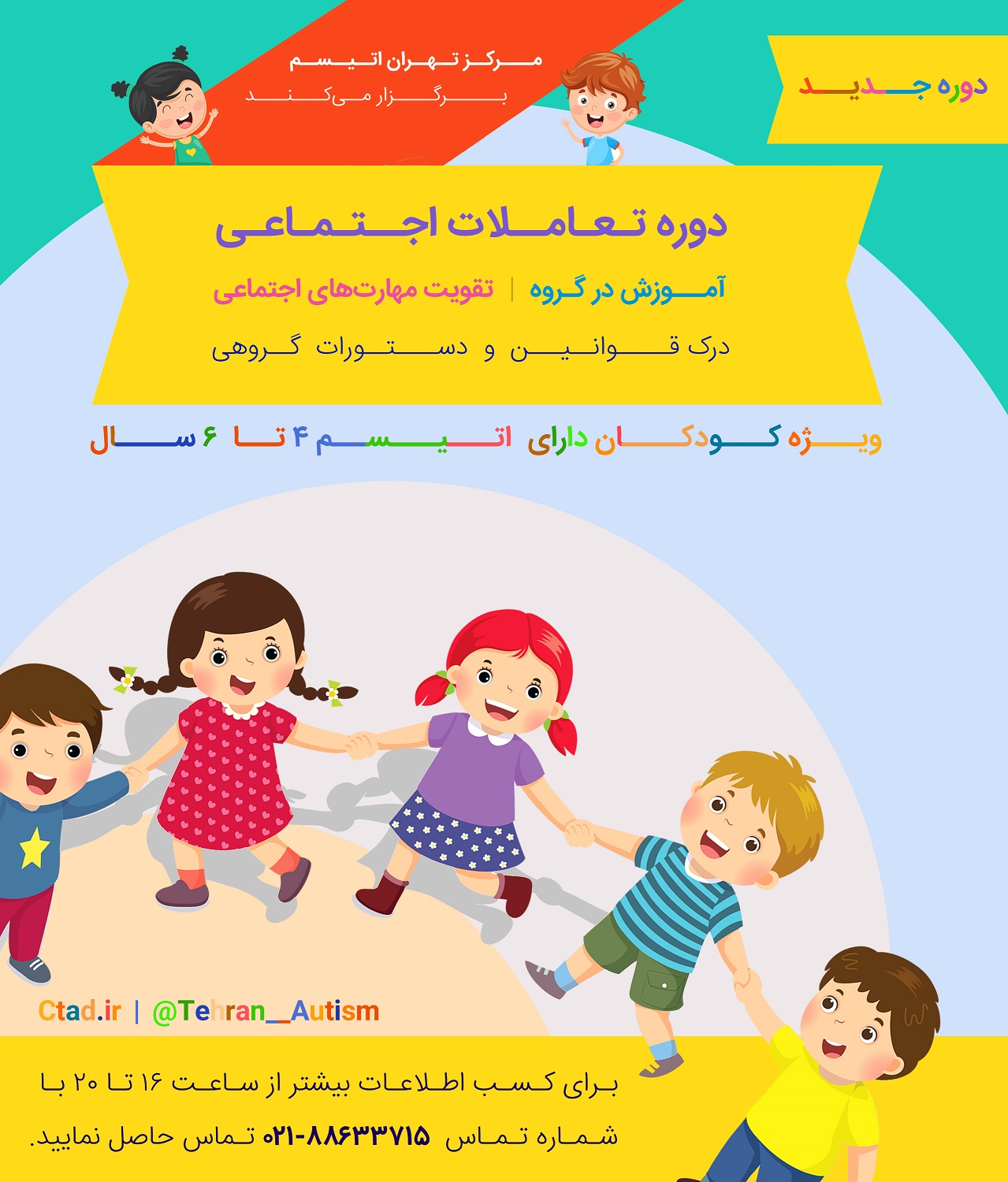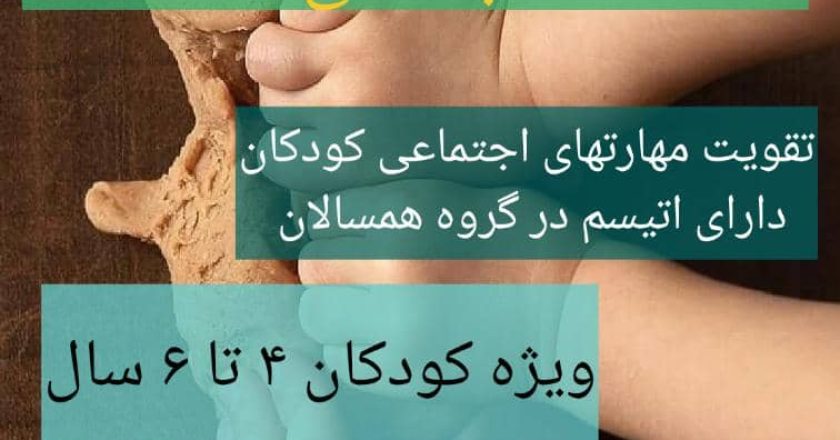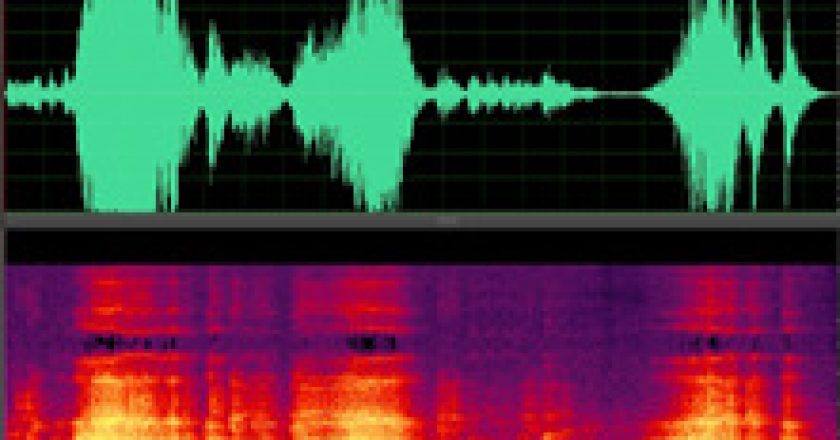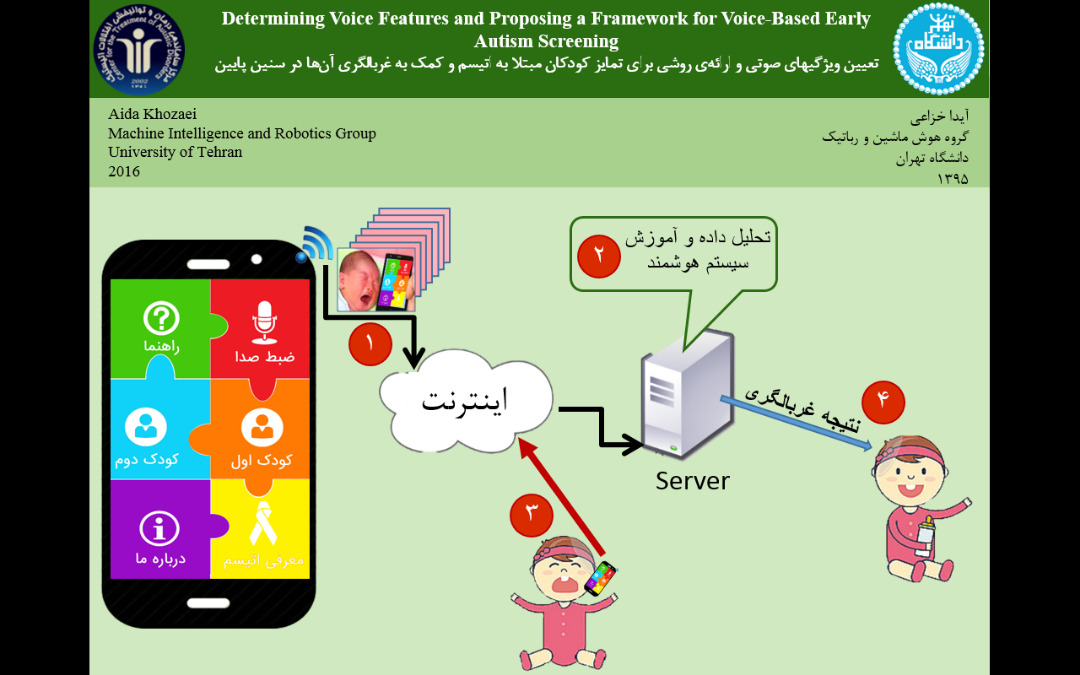
انسان همیشه در سختی رشد میکند. مثل کربن که وقتی تحت فشار و گرما قرار میگیرد، به الماس تبدیل میشود؛ انسان نیز همین طور است. بعضی اوقات فکر میکنم بهای رشد نگرش و فکر من، دخترم مشکات بود. بهای خوبی بود با اینکه امتحان سختی بود، اما من و دخترم از آن سرافراز بیرون آمدیم. یک چیزهایی در ظاهر سخت هستند، اما در حقیقت نعمتند. خدا همیشه وقتی دری را میبندد، درهای زیاد دیگری را باز میکند. قبلاً معنی خوشبختی را چیزهای دیگری می دانستم، ولی حالا همین حال را خوشبختی میدانم.
دخترِ قشنگم صبح روز جمعه خیلی بی سر و صدا و بدون اذیت به دنیا آمد. جمعه ۱۷ آبان ۹۲، ساعت ۶ صبح، من مشکات را بغل کرده بودم و به معنی واقعی کلمه دیگر مادر شده بودم.
مشکات دختر بچۀ خیلی آرامی بود. تا دو ماهگی به نظرم همه چیز عالی بود. به نظرم رشد طبیعی داشت. نزدیک به سه ماهگی او بود که یکی از پسران فامیل را دیدم. او از مشکات حدود یک ماه بزرگتر بود. وقتی آن بچه را دیدم احساس کردم که چقدر با دخترم متفاوت است. انگار هوشیارتر از دخترم است. همان شب این را به همسرم گفتم، اما گفت: “نه این طور نیست، احساس میکنی و چیزی نیست”. من هر ماه مشکات را برای چکاپ پیش دکتر خانوادگی میبردم و او بسیار از روند رشد فرزندم راضی بود. نزدیک یک سالگی بود که دقت کردم مشکات بیش از حد آرام است. انگار که بعضی اوقات در دنیای خودش غرق میشود و از این دنیا دور است. این را با دکتر مطرح کردم و دکتر گفت که این بچه آرام است. نگران نباش و با او بازی کن. مشکات خیلی دیر شروع به راه رفتن کرد؛ البته در محدوده مجاز (یعنی ۱ سال و ۵ ماهگی) راه رفت.
دخترم داشت بزرگ میشد و بسیار آرام و دوست داشتنی بود. کمی حرف میزد، اما بسیار نامربوط. یک شعر را یاد گرفته بود، وقتی آن را برایش میخواندم با من تکرار میکرد و بعضی اوقات خودش هم شعر را میخواند. اما من همیشه احساس میکردم که یک چیزی درست نیست، ولی نمیتوانستم بفهمم که چه چیزی درست نیست و جای خالی را نمیتوانستم پر کنم.
دخترم ۱۸ ماهه که شد به خاطر کار همسرم مجبور شدیم از ایران برویم و برای مدتی ساکن کشور عراق بشویم. این برای من که همیشه با دوستان و خانواده بودم خیلی سخت بود که از خانه و همه چیز و همه کس جدا شوم. تنهایی آنجا باعث شد که من افسردگی بگیرم، و به طبع، دیگر نه با مشکات حرف میزدم و نه بازی میکردم؛ او هم روزی دو الی سه ساعت در حال دیدن کارتون و تلویزیون بود. رفته رفته دیدم فرزندم عوض شده است و کارهای عجیب و غریبی میکند؛ رشد خودش را داشت اما انگار سرعت رشدش خیلی پایین و نامحسوس بود.
من مادری ایرانی و پدری عرب داشتم و به هر دو زبان مسلط بودم. از نوزادی با مشکات عربی و گاهی فارسی صحبت میکردم. به دلیل همین دو زبانه بودن، فکر میکردم که شاید دیر شروع کند به صحبت کردن. در سن دو سال و چند ماهگی مشکات، به یک مهمانی رفته بودم که بچه یکی از نزدیکان را آنجا دیدم. آن کودک از فرزندم فقط نه ماه بزرگتر بود، ولی انگار خیلی بزرگتر بود و خیلی راحت با مادرش ارتباط برقرار میکرد و حرف میزد؛ و انگار یک دنیا با دختر من فرق میکرد. به مادر بچه گفتم انگار دختر من خیلی با دختر شما فرق میکند، اصلاً هیچ کدام از کارهایی را که شما میگویید فرزند من انجام نمیدهد. هیچ وقت یادم نمیرود آن خانم چند لحظه سکوت کرد و بعد به من گفت که خب شاید کودک شما اتیسم داشته باشد. من اصلاً نمیدانستم اتیسم چیست، ولی بعد از اینکه این کلمه را شنیدم اولین واکنشی که نشان دادم این بود که نه بچه من هیچ مشکلی ندارد.
اتیسم واژهای بود که تا قبل از آن فقط یک بار وقتی باردار بودم شنیده بودم و حتی به خودم زحمت نداده بودم راجع به آن تحقیق کنم. به خیال اینکه این چیزها برای بچه من اتفاق نمیافتد، اما انگار دنیا داشت به من میگفت که خوش خیالی و راحتی کافیست، وقتش است کمی بفهمی زندگی واقعی یعنی چی! اینکه همیشه روی خوش زندگی برای من نیست و گاهی زندگی آن روی سکه را هم به ما نشان میدهد.
زمانی که مشکات دو سال و چهار ماهش بود او را نزد دکتر بردم، و خودم به دکتر گفتم که اتیسم است. البته قبل از اینکه نزد دکتر برویم، من راجع به اتیسم سرچ کردم و دیدم بله، مشکات تعدادی از علائم را دارد. مثلاً وقتی مشکات را صدا میزدم جواب نمیداد و نگاه نمیکرد، انگار که در دنیای دیگری است. خلاصه به دکتر گفتم دخترم اتیسم دارد. معاینه کرد و گفت که نمیشود گفت این بچه اتیسم دارد و برای زدن این برچسب خیلی زود است، تو نگران نباش با بچه حرف بزن و بازی کن. نمیدانم! شاید اگر آن دکتر میگفت بله مشکوک به اتیسم است من قضیه را جدیتر میگرفتم و یک سال از زمان مشکات را، که در سن طلایی بود، هدر نمیدادم. اما خب چیزی را که تمام شده نمیشود عوض کرد.
چند ماهی گذشت. حال روحی من بدتر شده بود. به معنی واقعی کلمه افسرده بودم. از طرفی مشکات هم بدتر شده بود. پیشرفتی نداشت که هیچ، پسرفت هم داشت. عادتهای عجیب و غریبی پیدا کرده بود. خیلی میچرخید، لباسها را قبول نمیکرد کامل بپوشد و همیشه یک آستین را نمیپوشید. ناخن میجوید و کلامش خیلی بدتر شده بود. مشکات بچهای بود که در ۱۸ ماهگی شعر میخواند و تک کلماتی را بلد بود، اما حالا در سکوت کامل بود و همان کلمههایی را که بلد بود، دیگر استفاده نمیکرد، یا اینکه یک کلمه را مقطعی استفاده میکرد و انگار بعد از مدتی فراموش میکرد.
تنها حرکت مثبتی که در آن دوره از زندگی انجام دادم این بود که به ایران برگشتم و به محض برگشت، پیش متخصص مغز و اعصاب رفتم. این دفعه مطمئن بودم که یک مشکلی وجود دارد، اما نمیدانستم چیست. البته یک گوشه ذهنم اتیسم بود، ولی انگار که خودم انکارش میکردم.
از یک متخصص مغز و اعصاب در یک بیمارستان معروف تهران وقت گرفتیم. از آنجایی که مشکات در خانه بچه خیلی آرامی بود و خیلی وقت بود که بیرون نمیرفتیم و رفتار او را بیرون از خانه ندیده بودم، چیزی که خیلی باعث شد من تعجب کنم این بود که آن دختر بچه آرام در مطب دکتر تبدیل به یک بچه بیش فعال شد، که اصلاً قبول نمیکرد روی صندلی بنشیند و میخواست به همه چیز دست بزند. این برای من فوق العاده عجیب بود، چون تا قبل از آن اصلاً اینگونه نبود. دکتر برای مشکات نوار مغز نوشت و گفت تا آن را انجام ندهیم، نمیتواند تشخیص قطعی بدهد. من و همسرم به این نتیجه رسیدیم که به یک دکتر دیگر مراجعه کنیم و ببینیم نظر دکتر دیگر راجع به مشکات چیست.
در عرض دو ماه نمیدانم به چند دکتر مراجعه کردیم. یکی میگفت مشکل گفتار دارد، یکی میگفت اتیسم نیست، یکی میگفت بروید شنواییاش را چک کنید. واقعا گیج شده بودم و مشکات مثل توپ از این طرف به آن طرف میرفت. به یک کلینیک مغز و اعصاب معروف در شرق تهران که یک دکتر خیلی معروف در آنجا بود مراجعه کردم. الان که به یاد آن دکتر میافتم، او را نمیبخشم، مرا چند ماهی دواند و وقت و سن طلایی مشکات را هدر داد. او تشخیص داد: “مشکات اتیستیک نیست، در هنگام زایمان اکسیژن به مغزش نرسیده و کمی تأخیر دارد، که با یک سال درمان درست می شود، نگران نباش”. انسان وقتی یک خبر خوب میشنود دیگر دوست ندارد احتمال دهد که ممکن است غلط باشد. به همان قانع میشود و به طبع، برای من هم همین طور شد. آن دکتر به مشکات یک سری دارو داد. یک ماه بعد از دادن داروها، مشکات واقعاً بهتر شده بود و تفاوت محسوس کرده بود.
زمستان ۹۵ اوضاع مشکات کمی بهتر شده بود، اما هنوز مشکل داشت. من و همسرم دوباره به خاطر کار همسرم مجبور شدیم برای چند ماه به عراق برویم. با مشورت همان دکتر و یک روانشناس، برای اینکه اوضاع مشکات بدتر نشود آنجا دخترم را به مهد کودک فرستادم. مشکات را مهد ثبت نام کردم و اوضاع را برای مهد توضیح دادم. آنها هم برای اینکه کمکی کرده باشند، یک نفر مانند مربی سایه را به مشکات اختصاص دادند تا در مهد او را همراهی کند. مشکلات روزی سه ساعت مهد میرفت، یک ماه بعد از مهد رفتن، اوضاع بهتر شده بود. او کمی شروع به حرف زدن کرد، ولی کلمات را در جای مناسب استفاده نمیکرد و ضمایر را غلط به کار میبرد. تقریباً مطمئن بودم یک چیزی درست نیست، اما خب دوست نداشتم به اتیسم فکر کنم.
در همان زمان من فرزند دومم را باردار بودم، مشکات بعد از دو ماه مهد رفتن دوباره پسرفت کرده بود و اوضاع خیلی بدتر شده بود. یکی دو ماه به همین صورت گذشت که متوجه شدم خیر، این داروها هم انگار دیگر بیتأثیر است. دوباره شروع به جستجوی دکتر مناسب کردیم. همسرم یک روانپزشک فوق تخصص کودک معروف در تهران پیدا کرد. وقت ویزیت گرفتیم و رفتیم. آن روز را تا آخر عمر یادم نمیرود. اواخر فروردین ۹۶ بود. به نظرم بداخلاقترین دکتری بود که تا آن روز رفته بودم (البته بعدها برعکس آن به من ثابت شد). او من را شست و کنار گذاشت! گفت تشخیص مشکات اتیسم است. من نمیتواستنم حرف بزنم؛ انگار در آب غرق شده بودم. برای اطمینان بیشتر، او ما را به یک دکتر روانشناس معرفی کرد، کسی که بعدها مسیر زندگی من را عوض کرد و دیدگاه من نسبت به کودکان طیف اتیسم را تغییر داد. نامه ارجاع را گرفتیم و بیرون آمدیم. آن روز بسیار گریه کردم، اصلاً باورم نمیشد. به همسرم میگفتم این دکتر اشتباه میگوید و قطعا این روانشناس میگوید که اتیسم نیست.
اوایل اردیبهشت ۹۶ بود. یک روز جمعه با دکتر روانشناس وقت ملاقات داشتیم. از شانس بد من مشکات آن روز تب داشت و مریض بود. دکتر یک سری سوال از ما پرسید، چند سوال توجهی از مشکات پرسید که آن زمان اصلاً معنی آن را درک نکردم. یک اسباب بازی آورد و آن را چرخاند، روشن شد و روی زمین چرخید و مشکات محو حرکت چرخشی اسباب بازی بود. بعدها متوجه شدم که مشکات باید سرش را بالا میآورد و با نگاه از دکتر میخواست که دوباره آن را روشن کند. اما این اتفاق نیفتاد و مشکات اصلاً سرش را بالا نکرد. دکتر برای انجام آزمایش غدد ما را به متخصص متابولیک ارجاع داد و گفت: “به احتمال زیاد تشخیص اتیسم است، ولی چون تب دارد و مریض است یک بار دیگر، سه ماه بعد دوباره به همراه جواب آزمایش بیا. در این سه ماه کاردرمانی انجام بده و یک زبان برای مشکات انتخاب کن”. تا آن موقع مشکات عربی متوجه میشد و قطعاً اگر من میخواستم ایران بمانم باید فارسی یاد میگرفت. مهمترین چیز اینکه باید با مشکات “بازی ساعت” انجام دهم و بعد برایم توضیح دادند که بازی ساعت به چه صورتی است.
بعد از آن روز، انگار زندگی وارد فاز جدیدی شده بود. دفتر قبلی بسته شده و دفتر جدیدی باز شده بود. تا چند هفته هر کجا میرفتم به همه بچهها نگاه میکردم، تک به تک! و بعد به دخترم نگاه میکردم و با خدایم حرف می زدم و میپرسیدم: چرا؟! آن روزها حس یک غرق شده در آب را داشتم، که هر چقدر داد میزدم، کسی صدایم را نمیشنید. اصلاً در واقع نمیتوانستم با کسی صحبت کنم.
بازی کردن را با مشکات به مدت روزی دو ساعت طبق همان روالی که دکتر گفته بود شروع کردم و هر پنج دقیقه بازی را عوض میکردم. خیلی کار سختی بود. مشکات خیلی مقاومت میکرد و به راحتی قبول نمیکرد بازی را عوض کند، یا اینکه هر بازی را یک الی دو دقیقه انجام میداد و سراغ یک بازی دیگر میرفت. به تدریج تلویزیون و وسایل دیجیتالی را کم کردم و زمان بازی را افزایش دادم و سعی میکردم در طول روز تعاملم با مشکات بیشتر باشد و زیاد غرق دنیای خودش نشود. برای اینکه مشکات فارسی یاد بگیرد، هم زمان در خانه فارسی صحبت کردن را شروع کردیم و روزی سه ساعت به مهد میرفت که در یک محیط کاملاً فارسی باشد. البته مهد را فقط برای آموزش زبان میرفت، وگرنه اصلاً برای مشکات مفید نبود.
تابستان ۹۶ سختترین تابستان عمر من و مشکات بود. کاردرمانی را شروع کردیم. ابتدا هفتهای یکبار و به تدریج هفتهای دو بار او را میبردم. بعد از چند هفته تفاوت فاحش را دیدم، و دیدم که دخترم فرق کرده بود و بهتر شده بود. تقریباً مهلت سه ماههای که دکتر داده بود در حال اتمام بود. مشکات از نظر من بهتر شده بود و تک کلمه فارسی بیربط هم میگفت و متوجه میشد. من خیلی امیدوار بودم که دکتر تشخیص قطعی اتیسم ندهد.
اواخر مرداد ۹۶ دوباره پیش دکتر رفتیم. بعد از بررسی و پرسش و پاسخ، همانند دفعه قبل گفت مشکات اختلال اتیسم دارد و باید هفتهای شش روز، و روزی سه ساعت ABA داشته باشد. این دفعه مانند دفعه قبل دیگر شوکه نشدم و مغزم آمادگی این را داشت. به خودم میگفتم در هر چیزی خیری وجود دارد. در طول دورهای که مشکات را کاردرمانی می بردم، در مورد ABA شنیده بودم، ولی دقیقاً نمیدانستم چیست؛ ولی میدانستم هر چیزی که هست معجزه میکند. بعدها به معنی واقعی کلمه معجزه را دیدم!
تقریباً یک ماه در صف انتظار مربی بودیم. دیگر نزدیک زایمان پسرم بودم و بازی کردن با مشکات واقعاً برایم سخت شده بود. هنوز ABA شروع نشده بود و اواخر شهریور ۹۶، پسرم به دنیا آمد که باعث شد دوباره دفتر جدیدی برایم باز شود و تازه دردسرهایم شروع شد. یکی از مشکلاتی که داشتم این بود که به هیچ وجه نمیتوانستم هر دو را حتی یک لحظه کنار هم تنها بگذارم، و این با نبود همسرم کار بسیار سختی بود. مشکات به طرز غیرقابل باوری به برادرش آسیب میرساند و این ناشی از درک پایین او بود. من هیچ کاری نمیتوانستم انجام دهم، به جز اینکه این دو را از هم دور نگه دارم. اوایل مهر بود که مرکز جلسه توجیهی برگزار کرد و قرار شد کلاسهای ABA مشکات از اواسط مهر شروع شود. وسایل لازم را تهیه کردم.
دقیقاً دو هفته از زایمان پسرم گذشته بود که کلاسهای مشکات شروع شد و قرار بر این بود که یک هفته اول را در مرکز باشیم. به همراه دخترم، پسرم و خواهرم به مرکز رفتیم. داخل رفتم و آنجا با مربیای که قرار بود مربی ABA مشکات شود، آشنا شدم. مربیای که بعداً خدا را شکر کردم که اولین مربی مشکات او بود. چون نمیتوانستم زیاد پسرم را تنها بگذارم، به جای من، خواهرم با مشکات داخل کلاس رفت و من صدای گریههای مشکات را میشنیدم. اوایل که صدای گریههای مشکات را میشنیدم، استرس میگرفتم و خودم هم شروع به گریه میکردم؛ اما بعدها کمکم فهمیدم که باید قوی باشم. برای درمان مشکات باید یک مادر قوی باشم.
بعد از یک ساعت و نیم از کلاس بیرون آمدند و به من گفت که باید برای مشکات مشوق بخرم. برایش خریدم و دوباره داخل رفت. تنها چیزی که یادم است و بعداً برایمان خاطره شد این بود که مشکات مشوقش، که یک پاکت چیپس بود را محکم گرفته بود و حاضر نبود آن را به هیچ کس بدهد.
هفته اول مرکز گذشت. روزهای اول را با گریه گذراند، روزهای آخر دیگر حتی نیازی به خواهرم هم نبود و مشکات تنها سر کلاس مینشست. اولین چیزی که مشکات در هفته اول یاد گرفت، کلمه افتاد همراه با معنی آن بود. کلاس در خانه با وجود شرایط خاص شروع شد. سه ساعتی که مربی میآمد، برای من واقعاً سه ساعت جادویی بود. چون میتوانستم کمی به پسرم و خانه برسم. مشکات طبق برنامهای که مرکز داده بود خوب پیش میرفت. البته هفته اول خیلی گریه میکرد، ولی بعدها کمکم عادت کرد.
یادم است روز اولی که مربی به خانه آمد، من از او پرسیدم آیا امکانش هست یک روزی مشکات مانند بچههای هم سن و سالش بتواند به مهد برود؟ مربی گفت نا امید نباشید، اگر تلاش کنید نتیجه هم میبینید. یادم است بعضی اوقات برای اینکه مشکات از اتاق بیرون نیاید، در را قفل میکردم و من از مربی میپرسیدم روزی میآید که من در را قفل نکنم و مشکات سر کلاس ABA بنشیند؟ مربی میگفت: بله میشود، فقط باید صبر کنید، به این مرحله هم میرسیم. یک بار برای یک آیتم که مشکات مقاومت داشت، خیلی گریه کرد و صدای گریه به حدی بلند بود که پدربزرگ مشکات که طبقه بالا زندگی میکرد آمد و با من دعوا کرد. گفت: تو نوه من را اذیت میکنی و این کلاس لازم نیست. من توجیهش کردم که این کلاس برای مشکات مانند دارو است. پیشرفتهایی را که دخترم در ماه اول کرد هیچ وقت فراموش نمیکنم. مشکات بلد نبود فوت کند، بوس کند و حتی اجازه نمیداد که موهایش را با گلسر ببندم. همه اینها را در ماه اول یاد گرفت و من انقدر ذوق میکردم که حد نداشت.
حتی مشکات هیچ وقت مامان نمیگفت. یک آیتم داشت که مجبور بشه اگر چیزی را بخواهد، به من بگوید: مامان! کلمهای که تا آن زمان که دخترم چهار سالش شده بود، هیچ وقت نگفته بود. وقتی بار اول گفت مامان، انگار دنیا را به من داده بودند.
اینقدر پیشرفت مشکات خوب بود که از بچهای که دائم خودش را روی زمین میانداخت، به یک دختر بچه آرام و حرف گوش کن و مطیع تبدیل شد. باور کردنی نبود. در حدی که سر اولین ارزیابی که رفتیم مرکز وقتی PI (مسئول پرنده) مشکات او را دید به من گفت چقدر عوض شده است! حتی آنجا من به مشکات گفتم کنارم بنشین و مشکات نشست. PI خیلی تعجب کرد و با تحسین به من گفت خدای من این همان بچه یک ماه پیش است که بسته چیپس را محکم گرفته بود و به هیچ کس نمیداد؟ و الان این گونه دستورپذیری دارد. دخترم هر ماه آیتمها را پاس میکرد و پیشرفت میکرد و تغییر کرده بود. کلیشههایی مثل گیر دادن به یک سری وسایل خاص و آسانسور که قبلاً داشت که بابت این قضیه من هیچ جا نمیتوانستم بروم، خیلی کم شد و بعد از دو ماه تقریباً قطع شد.
البته از وقتی ABA شروع شد من هم زمان با مشکات برنامه ساعت کار میکردم (خودم یا خواهرم). ولی بعد از مدتی دیدم من دیگر اصلاً توان این کار را ندارم و فوق العاده خسته میشوم. عملاً انرژی نمیماند (در حدی که بعضی اوقات از خستگی بیهوش میشدم) که بخواهم برای فرزند دیگرم صرف کنم. برای همین یک مربی گرفتم که در ساعات دیگر روز با مشکات بازی کند. البته این کار به همین راحتی که الان میگویم نبود و حدود پنج الی شش مربی عوض کردم تا اینکه یک مربی پرانرژی پیدا کردم؛ که البته لطف خدا بود.
بعد از چهار ماه ABA، گفتاردرمانی را شروع کردیم و کلام مشکات بهتر شده بود. تقریباً شش ماه از ABA گذشت و مربی باید تعویض میشد. همزمان من درخواست آموزش توالت مشکات را به مرکز داده بودم. یادم میآید آن تابستان طولانی و منفور ۹۶ سعی کردم به مشکات آموزش دستشویی را بدهم، اما نشد که نشد. سه هفته عذاب برای مشکات و من بی فایده بود، چون آن موقع مشکات درک لازم را نداشت. اما خب بعد از شش ماه ABA، درک مشکات بیشتر شده بود و آمادگی این را داشت و من هم یاد گرفته بودم که با کودک دارای اختلال اتیسم چگونه باید رفتار کنم. خلاصه قرار شد که سه روز برویم مرکز که آنجا مشکات آموزش توالت ببیند.
روز اول پیشرفت زیادی نداشتیم. در روز دوم کمی اوضاع بهتر شد و مشکات تقریباً متوجه شد. روز سوم دیگر به مرکز نرفتیم و در خانه ماندیم، و من به مرکز فیدبک میدادم. ارزیابان عزیز و مربی مشکات واقعاً در این پروسه خیلی به مشکات و من کمک کردند. تقریباً یک هفته بعد مشکات یاد گرفته بود و متوجه شده بود که فرایند به چه صورت است، البته سن دخترم در این یادگیری سریع بیتأثیر نبود.
به عنوان یک مادر، آرزوهایی که برای مشکات داشتم و آنها را غیرقابل دسترس و بسیار دور میدیدم، یک به یک داشت محقق میشد. روزی فکر میکردم محال است مشکات بتواند به مهد برود، اما کم کم همه چی داشت عوض میشد، دختری که به هیچ وجه درک نداشت و انگار در این دنیا نبود. یک ماه اول که برادرش به دنیا آمده بود، کتکی نبود که از دست مشکات نخورده باشد؛ یا موهای او را میکشید یا دستهای برادرش را چنگ میانداخت، در حدی که برای چند ثانیه هم نمیشد آنها را کنار هم تنها گذاشت. اما کمکم همه چیز عوض شد. مشکات درک کرد که نباید برادرش را اذیت کند و دختری که به من مامان نمیگفت، یاد گرفت مرا صدا بزند و یاد گرفت از پدرش گزارش بگیرد و به من گزارش دهد.
هیچ وقت اینها را تصور نکرده بودم، اما خدا به من نشان داد، به من ثابت شد که معجزه فقط برای پیامبرها نیست. معجزه برای دخترم اتفاق افتاد. من موقعی که فهمیدم دخترم در طیف اتیسم است، انگار مانند مردهای بودم و وقتی ABA شروع شد و مشکات هر ماه بیشتر از ماه قبل پیشرفت میکرد، من هم کمکم زنده شدم. همیشه در کتابها، حکایت ققنوس را میخواندم که از خاکستر دوباره جان میگیرد. من هم مثل همان ققنوس افسانهها دوباره زنده شدم و جان گرفتم. سبک زندگی ما عوض شد. اولویت زندگی من مشکات و پسرم شدند و تا چند ماه همه چیز را کنار گذاشتم و بیشتر وقتم را برای این دو میگذاشتم که واقعا هم تأثیر مثبت داشت. خرداد ۹۷ مرکز کلاس گروهی برای آمادگی قبل از مهد رفتن گذاشت که مشکات هم در این دوره شرکت کرد. آن کلاس واقعاً برای مشکات مفید و بسیار عالی بود و در پایان دوره به عنوان نفر اول کلاس معرفی شد.
چند ماهی گذشت، آبان ۹۷ بود. تقریباً یکسال از شروع ABA مشکات میگذشت که بعد از یک ارزیابی، مسئول پرونده مشکات به من گفت که او آمادگی مهد رفتن را دارد. از خوشحالی نمیدانستم چکار کنم، فقط دو تا بال برای پرواز کم داشتم. حال باید میگشتم و یک مهد که شدو (مربی سایه) را قبول میکرد، پیدا میکردم؛ که این خودش به یک جفت کفش آهنین نیاز داشت. مهدی که دو زبانه نباشد و شدو قبول کند خیلی کم بود، و پیدا کردنش خیلی سخت. بالاخره بعد از کلی پرس و جو توانستم یک مهد خوب پیدا کنم. هم زمان با شروع ABA، از ۶ روز به ۳ روز در هفته، شدو عملاً شروع یک دوره جدید دیگر برای مشکات و من بود. چالشهای جدیدی را در مهد داشتیم. هر روز بعد از پایان ساعت مهد باید از مشکات گزارش میگرفتم و مجبورش میکردم که حرف بزند، و به من بگوید که آن روز دقیقاً چه فعالیتی انجام داده است. البته با توجه به گزارشی که شدو برای من مینوشت، من چک میکردم که آیا مشکات درست گزارش داده است یا خیر. اوایل خیلی سخت میتوانست این کار را انجام دهد، ولی کمکم خیلی بهتر شد.
پیشرفت مشکات خوب بود و همچنان او را به گفتاردرمانی و کاردرمانی میبردم. از نظر درک و فهم بهتر شده بود. در حدی که یک بار برادرش را که جلوی در آسانسور بود، قبل از بسته شدن در، عقب کشید که این کار مشکات، من را شگفت زده کرد؛ باورکردنی نبود بچهای که هیچ درکی از خطر نداشت و درخیابان همیشه مجبور بودم او را بغل کنم تا عبور کنیم، اینگونه خطر را درک کند و حواسش به برادر کوچکترش هم باشد. چند ماهی از مهد رفتن مشکات گذشته بود که یک سری مشکلات رفتاری پیدا کرد. مرکز به من گفت باید یک دوره PMT را بگذرانیم که واقعاً خیلی کمک کننده بود و بسیاری از مشکلات رفتاری مشکات را کاهش داد.
نوروز ۹۸، یک سال و نیم از شروع ABA مشکات میگذشت. مرکز، همایش اتیسم برگزار کرده بود که من و مشکات رفتیم. مشکات داشت از من سوال میپرسید و من جوابش را دادم که در همان موقع یک مادر، مشکات را دید و از من پرسید که آیا مشکات ترخیص شده است؟ من با خنده و تعجب گفتم نه هنوز. شاید از نظر خیلیها وضعیت مشکات خوب بود، ولی من بیشتر از بقیه نقاط ضعف و قوت مشکات را میدانستم و تا وقتی کامل خوب نشده، دوست نداشتم که آموزش و درمان او را قطع کنم.
خرداد ۹۸ بود که مشکات همراه با بچههای کلاس مهد کودک، در جشن فارغ التحصیلی شرکت کرد. وقتی او را روی سن دیدم خیلی خوشحال شدم. دخترم همراه با هم کلاسیهای خود سرود میخواند و حرکات نمایشی انجام میداد. به نظرم سال ۹۸ سال خوبی برای ما بود. البته اگر بخواهم درستتر بگویم از وقتی که با مرکز آشنا شدیم، همه چیز بهتر شد و انگار که از داخل هزارتو بیرون آمدیم و توانستیم مسیر درست را تشخیص دهیم.
تابستان ۹۸ مرکز برای بچههای با سطح عملکرد بالا، کلاس لگودرمانی گذاشت که خدا را شکر دخترم به این سطح رسیده بود. کلاس لگو بسیار کلاس مفیدی بود و مهارتهای ارتباطی و بازی بچهها را بهتر کرد. کمکم ساعتهای حضور در مهد بیشتر شد که البته هنوز با شدو بود و دخترم رفتار نسبتاً پایداری پیدا کرده بود و بیرون دیگر کسی با تعجب به ما نگاه نمیکرد.
دو سال از شروع ABA مشکات میگذشت و چند نفری از همکلاسیهای کلاس لگو مشکات ترخیص شدند و من منتظر بودم که مشکات هم ترخیص شود. اما خودم در باطن میدانستم که دخترم هنوز به درمان نیاز دارد. اواخر سال ۹۸ بود که به کرونا خوردیم و کلاسهای مرکز تعطیل شد. خیلی نگران شدیم که الان بدون کلاسها وضعیت مشکات چطور میشود؟ آیا پسرفت میکند یا نه؟ کلاسهای مشکات تقریباً به مدت سه ماه قطع بود، اما دخترم حتی یک درصد هم پسرفت نداشت و این خیلی خوشحالم میکرد.
به صورت کلی مشکات هیچگاه پسرفت واضحی نداشت. شاید در مواردی مثل شروع فصلها کمی درجا میزد، ولی خدا را هزار مرتبه شکر دخترم مشکلات حسی زیادی نداشت و اکثر مواقع با کاردرمانی به موقع حل شده بود. بعد از سه ماه وقفه به علت کرونا، کلاس مشکات اواخر اردیبهشت ۹۹ شروع شد. هنوز چند جلسهای بیشتر از کلاس های ABA نگذشته بود که مرکز به من اطلاع داد با دکتر جلسه داریم تا وضعیت مشکات بررسی شود. آن موقع دخترم شش سال و نیم داشت و باید تصمیم میگرفتیم که مهر ۹۹ به مدرسه برود یا نه! و نکته دیگر اینکه با شدو باید به مدرسه برود یا بدون شدو؟
یادم میآید که سال قبلش، یعنی خرداد ۹۸، زمانی که مشکات به نظر من خیلی خوب بود؛ یک در جلسه که با دکتر داشتیم، مشکات ۱۸۰ درجه عوض شد و هر کاری را که تقریباً مدتها انجام نداده بود، جلوی دکتر انجام داد. آن موقع دکتر گفت که مشکات قطعاً هنوز نیاز به ABA و برنامه تصویری دارد. اما امسال خرداد ۹۹ وقتی مرکز دوباره اطلاع داد که جلسه هست، یک لحظه یاد سال قبل افتادم و اینکه چقدر آن موقع به نظرم مشکات خوب بود، اما در جلسه این طور نشان نداده بود. به خدایم توکل کردم و به مرکز رفتیم. در کمال تعجب و ناباوری، دخترم خیلی آرام روی صندلی نشسته بود و به سوالات دکتر جواب میداد. دکتر حدوداً بعد از ۴۵ دقیقه گفت که مشکات ترخیص است.
از خوشحالی دیگر روی پا بند نبودم. باورم نمیشد یعنی دو سال و نیم زحمات مشکات، من، همسرم، مربیهای مشکات و مرکز به ثمر نشسته بود. از وقتی که مشکات تشخیص گرفت، فکر میکردم اگر روزی دخترم ترخیص شود چه احساسی خواهم داشت؟ این دو سال و نیم چطور گذشت؟ چقدر مربی آمد و رفت؟ چقدر کاردرمانی و گفتاردرمانی بردم؟ چند دفعه به مرکز آمده بودم؟ چند بار با استرس در ماشین نشسته بودم و منتظر پایان ارزیابی مشکات بودم که آیا ارزیابی را خوب داده یا بد؟ آیا آیتم ها را پاس کرده یا نه؟ نمیدانستم! یکی از مادرها به من میگفت که من اسم کوچه مرکز را گذاشتم کوچه امید! واقعا بجا اسم گذاشته بود.
اگر قبل از شروع ABA کسی به من میگفت که روزی مشکات به مدرسه میرود آن هم بدون شدو اصلاً باور نمیکردم، اما یک ماه بعد از شروع ABA، دیدگاهم عوض شد و اطمینان پیدا کردم که دختر من میتواند و توانایی لازم را دارد و میتواند به سطح بچه هم سن خودش برسد. با اینکه مشکات ترخیص شد اما من بابت رفتن به مدرسه نگرانی داشتم و دارم. اینکه در کلاس چگونه رفتار میکند؟ آیا به حرفهای معلم توجه میکند و با بقیه همگام پیش میرود؟ میترسیدم و هنوز هم میترسم! اما خدای من همه جا کمک حال من بوده و هست. روزی که رفتم مشکات را در مدرسه ثبت نام کنم، مشکات در مصاحبه قبول شد و حتی سوالاتی را که باقی بچهها نتوانسته بودند جواب بدهند پاسخ داده بود و مدیر هم اصلاً نتوانست تشخیص دهد که مشکات روزی در طیف اتیسم بوده.
امیدوارم جامعه ما در سالهای آینده مسئولیت بیشتری در قبال کودکان اتیسم داشته باشد؛ چرا که هنوز تا پذیرش این اختلال خیلی فاصله داریم. خیلی جاها رفتم که مرا ناامید کردند و ناراحتم کردند و با اشک چشم بیرون آمدم، اما جاهایی هم رفتم که با روی باز کمکم کردند. اما هنوز خیلی مانده تا به راحتی بتوان اسم اتیسم را آورد.
حال بعد از اینکه از این طوفان عبور کردم میبینم که رشد کردهام، و فکر و نگرش و دغدغه زندگیام تغییر کرده است. مشکات در واقع معجزه زندگی من بود که باعث شد دیدگاهم نسبت به افراد و کودکان با نیازهای ویژه عوض شود. من خدا را شاکرم که این معجزه را نصیب من کرد.




















